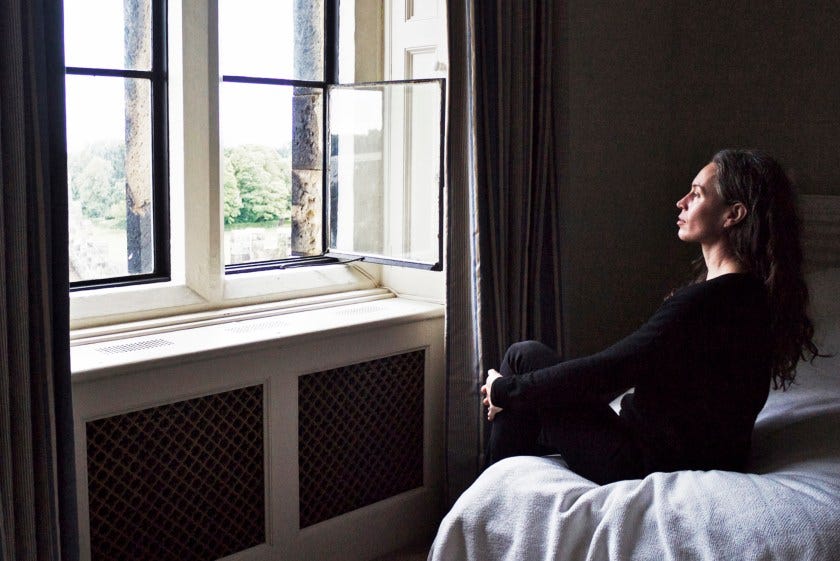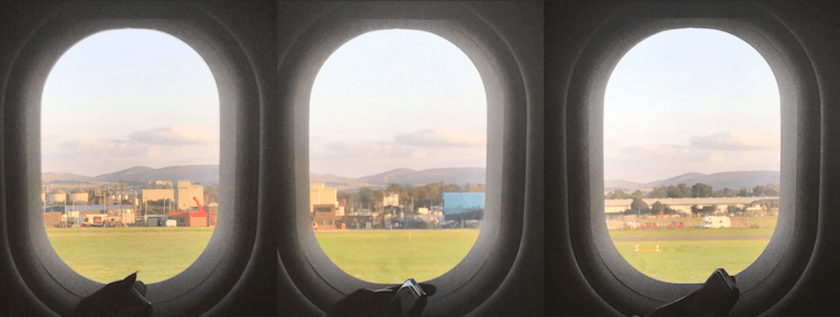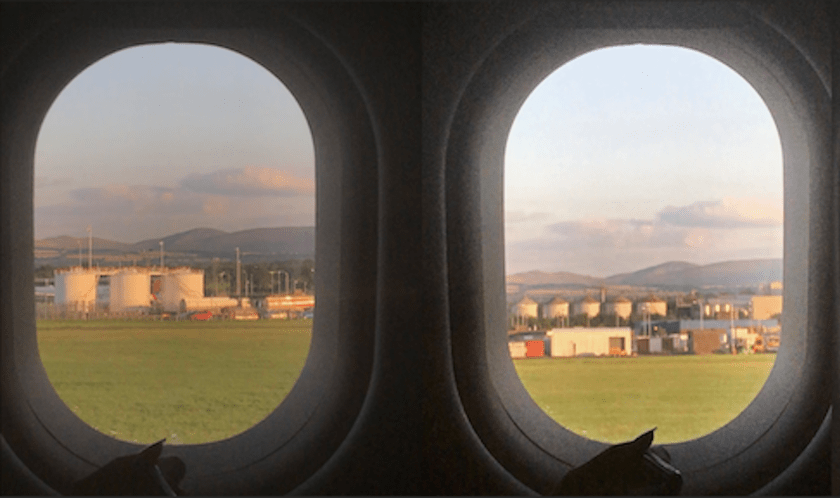After several long international flights and a night in Japan, I arrived. The afternoon light was soft. At first, I thought everything was blurred through the aeroplane window. But it looked the same when I stepped outside. Shadows melted into the landscape. Colours seemed at once more vivid and more nuanced. Even the tarmacked air strip felt ethereal.
My mobile pinged with a text from the portrait subject. We exchanged brief descriptions of hair colour and clothes so we could recognise each other. A minute later we were face to face. I liked her immediately.
I won’t tell you more about the woman or her portrait. Even though she is intriguing, and an ultimate muse and I love the painting. I think the subject of a portrait should decide when or if it is unveiled in public, unpressured by deadlines. But I want to acknowledge the impact of the experience on me as an artist.
On the first morning I woke at dawn. Opened French doors of the bedroom to inhale fresh country air. Below the small balcony, a wild fawn grazed with delicate movements. I stared at the rich reddish browns and deep cream of the animal’s fur; bright green grass; pretty pastels of a nearby manicured garden. Waited for the colours to become less saturated as the sunlight brightened. That’s what happens in the subtropics, where I am from. But the colours shifted hue without losing intensity.
Throughout each day the landscape looked different. Clouds like wild ocean waves, roiling, breaking, swept fast by strong currents. Glowing with sunlight, transparent against blue, heavy and bruised with rain. Leaves shimmered in filtered sunlight, shifting from dark to pale and back again. I couldn’t find a patch of block colour. There were large areas of colour but with endless tiny variations that made them glisten or seem to move even if everything was still. Autumnal shades deepened within hours, luminous, like a slow fire.
It changed the way I perceive colour. When I came back to Sydney, I saw nuances I’d missed before. I am better at noticing the subtle micro-shifts. I see more colours, which affects the art I want to make. I suspect I am driven by the pleasure of discovering a whole new sensory experience. It makes the everyday more compelling, more beautiful.
Mostly, I have looked at art via reproductions in books and online. Or I visited galleries and museums for several hours to see as much art as possible before leaving.
While overseas I lingered with artworks in a private collection, unarguably some of the greatest European paintings of the modern era. I realised that most classic Western art I’d looked at until then was not as great as I thought. I’ve seen significant works by renowned artists in touring exhibitions. But nothing like this. These paintings were incomparable in every way: composition, use of light, emotion, mystery, colour nuance, application of paint, archival stability. They felt less like pictures and more like portals to other worlds.
I am a self-taught artist. I didn’t have the opportunity to attend classes where skill was well taught, or to learn from a master. I learn by observation, research, experiment. After I quit art school I spent six months at the state library. There, I discovered contemporary British and American art, which changed the way I thought about visual communication.
While I’m not interested in making classic paintings, seeing truly exquisite examples of them changed the way I think of painting.
Last year, while painting the final portrait, I documented my process of mixing colour. I had already created a digital study and wanted to match it perfectly. Acrylic paint, the medium I use now, looks different when dry. So I mixed a colour, painted a swatch, dried it using a hairdryer (which I saw Australian artist Howard Arkley do in a documentary), adjusted the mix and repeated until I filled a sheet of paper with subtle variations. Then I mixed a larger batch of the exact shade I wanted.
I showed these experimental colour studies to a patron of my art who saw their potential. Thanks to the patron’s support I’ve been further developing and refining these abstract colour paintings over the last few months. They have evolved from mixing ‘the perfect colour’ to studies of nature that explore the passing of time through the way changes in natural light effect colour.
I guess I would classify them as colour field or abstract expressionism, influenced by French impressionist Claude Monet and American abstract artists Mark Rothko and Agnes Martin.
However, I began these paintings intuitively: after being deeply affected by light and colour in a foreign landscape; time with classic European master paintings; and my best efforts to make a static portrait of an innately enigmatic woman.
Published at Coagula Art Journal, April 28, 2022





